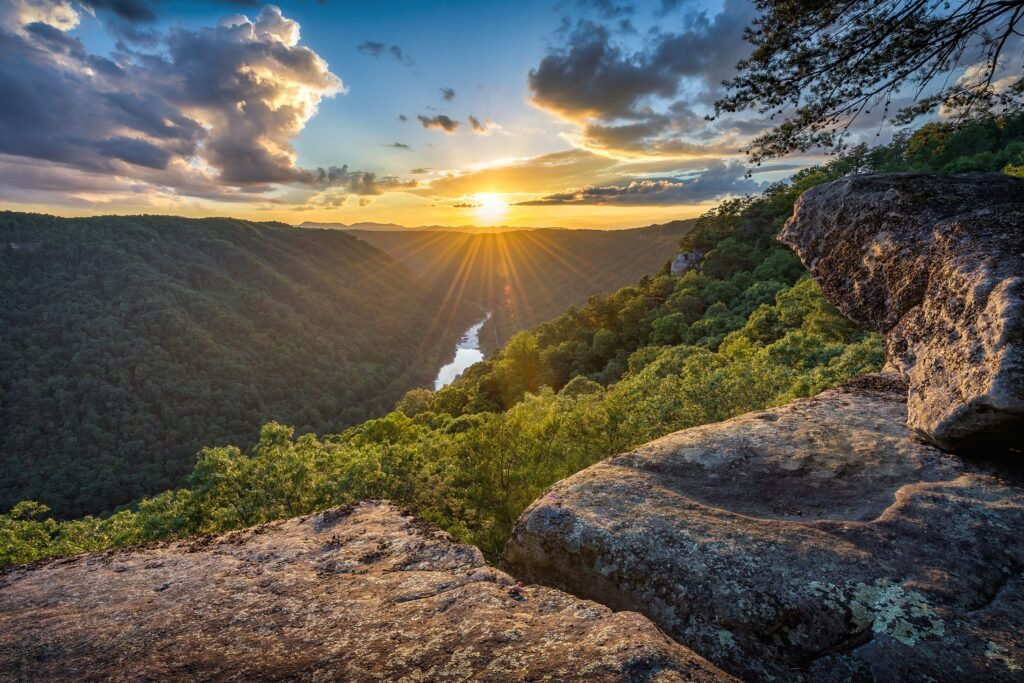Beyond the Mississippi: Discovering the Underrated National Parks of America’s East Coast
Unfair as it may be, America’s East Coast national parks don’t have quite the luster in popular consciousness as their cousins out west. In the minds of most casual travelers, the East Coast just lacks the spectacular views and epic landscapes west of the Mississippi River. But as someone who’s spent years writing about the Great Smoky Mountains and exploring eastern treasures, I’m here to set the record straight – the East has just as much magic, albeit of a different flavor.
The Hidden Treasures of Eastern National Parks
Having spent countless hours hiking the misty trails of the Smokies, I’ve developed a profound appreciation for the subtle beauty of eastern landscapes. There’s something deeply spiritual about standing in a forest that’s been thriving for over 100 million years – something you can experience firsthand in Great Smoky Mountains National Park.
But the Smokies are just the beginning of what the East Coast has to offer.
The Diversity You Won’t Find Out West
Eastern parks might not have the sheer vertical drama of Yosemite or the otherworldly landscapes of Zion, but they offer something equally valuable: incredible biodiversity. The Great Smoky Mountains alone host more tree species than all of northern Europe and more flowering plants than any other North American national park.
While western parks often showcase dramatic geology, eastern parks tell the story of ancient forests, diverse ecosystems, and human history dating back thousands of years.
Insert image of foggy Smoky Mountains forest here
Beyond the Smokies: East Coast Parks Worth Your Time
Though the Smokies hold a special place in my heart (and consistently rank as America’s most visited national park), several other eastern treasures deserve recognition:
Acadia National Park, Maine
Where else can you watch the first rays of morning sunlight touch American soil while perched atop a granite mountain overlooking the Atlantic? Acadia combines rugged coastline, mountain vistas, and pristine lakes in a surprisingly compact package.
Shenandoah National Park, Virginia
Just a short drive from Washington D.C., Shenandoah offers the Blue Ridge Mountains in all their glory. Skyline Drive provides 105 miles of scenic overlooks that rival anything you’ll find out west, especially during fall foliage season.
Everglades National Park, Florida
America’s largest subtropical wilderness is unlike anything else in the national park system. This “river of grass” hosts an incredible array of wildlife, from alligators to rare birds, in an ecosystem you won’t find anywhere else in America.
Insert image of Everglades sunset here
What Makes Eastern Parks Special?
| Feature | Eastern Parks | Western Parks |
|---|---|---|
| Biodiversity | Extremely high (especially plant species) | Varies by ecosystem |
| Forest Cover | Dense, ancient forests | More open, varied terrain |
| Human History | Thousands of years of continuous habitation | Often more recent human presence |
| Accessibility | Close to major population centers | Often require significant travel |
| Crowds | Can be heavy (especially Smokies) | Varies widely by park |
My Personal Love Affair with the Smokies
I remember my first sunrise at Clingmans Dome in the Smokies. The mountains rolled out before me like waves on an ocean frozen in time, each ridge a deeper shade of blue than the one before it. The Cherokee called these mountains “Shaconage” – place of blue smoke – because of the natural haze that gives them their distinctive appearance.
What makes the Smokies special isn’t just their beauty, but their accessibility. Unlike many western parks that require days of travel to reach, the Great Smoky Mountains sit within a day’s drive of a third of the U.S. population. This accessibility doesn’t make them any less magnificent – it just means more people can experience their wonder.
Eastern Parks Through the Seasons
One advantage eastern parks have over many western counterparts is their dramatic seasonal changes. I’ve watched the Smokies transform from the vibrant greens of summer to the explosive colors of fall, the stark beauty of winter, and the riot of wildflowers in spring. Each season offers an entirely different experience in the same location.
This seasonal diversity means eastern parks reward repeat visits in a way that some western parks don’t.
Insert image of fall colors in Shenandoah National Park here
Planning Your East Coast National Park Adventure
If you’re used to western parks, approach eastern parks with fresh eyes. Don’t expect the same experience – instead, look for the unique qualities that make these forests, mountains, and coastlines special in their own right.
Best Times to Visit
For the Smokies and other Appalachian parks:
- Spring (April-May): Wildflower explosions and comfortable temperatures
- Fall (October): Spectacular foliage and clear skies
- Winter: Fewer crowds and beautiful snow-covered landscapes (though some roads may close)
- Summer: Lush greenery, but prepare for afternoon thunderstorms and humidity
The Takeaway: Don’t Underestimate the East
I’ve hiked in Yosemite, stood in awe at the Grand Canyon, and watched Old Faithful erupt in Yellowstone. These are experiences every American should have. But I’ve also watched fireflies perform synchronized light shows in the Smoky Mountains, something you won’t see anywhere else in the world.
The eastern parks may not scream for attention like their western cousins, but they whisper secrets just as profound if you’re willing to listen.
Next time you’re planning a national park adventure, consider heading east instead of west. The forests, mountains, and shores of the Atlantic coast offer natural and cultural treasures that deserve a spot on every traveler’s bucket list.
Have you visited any of America’s East Coast national parks? Which was your favorite? Share your experiences in the comments below!

